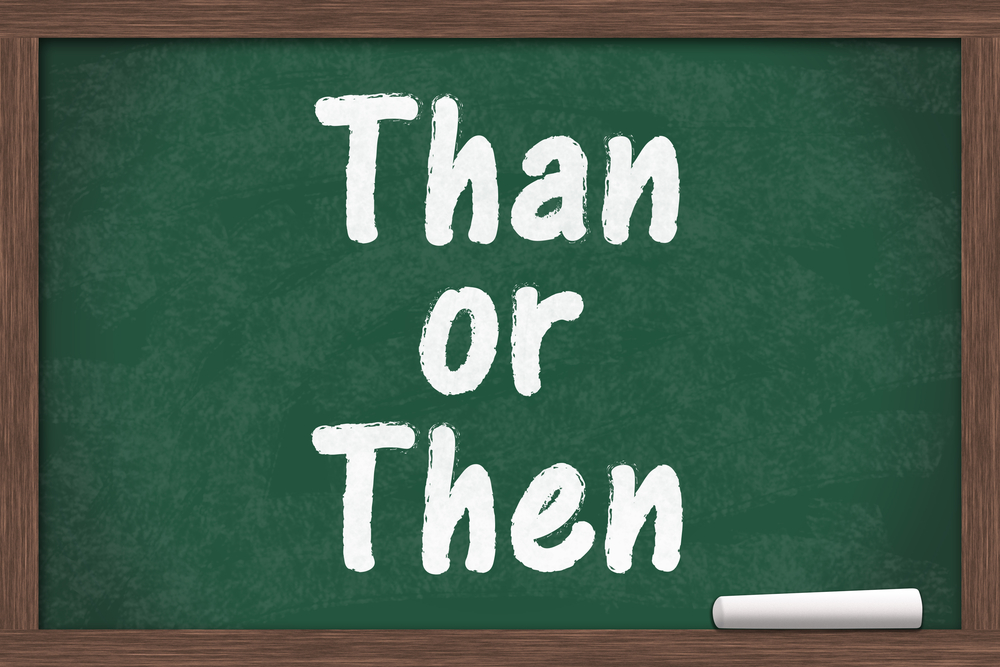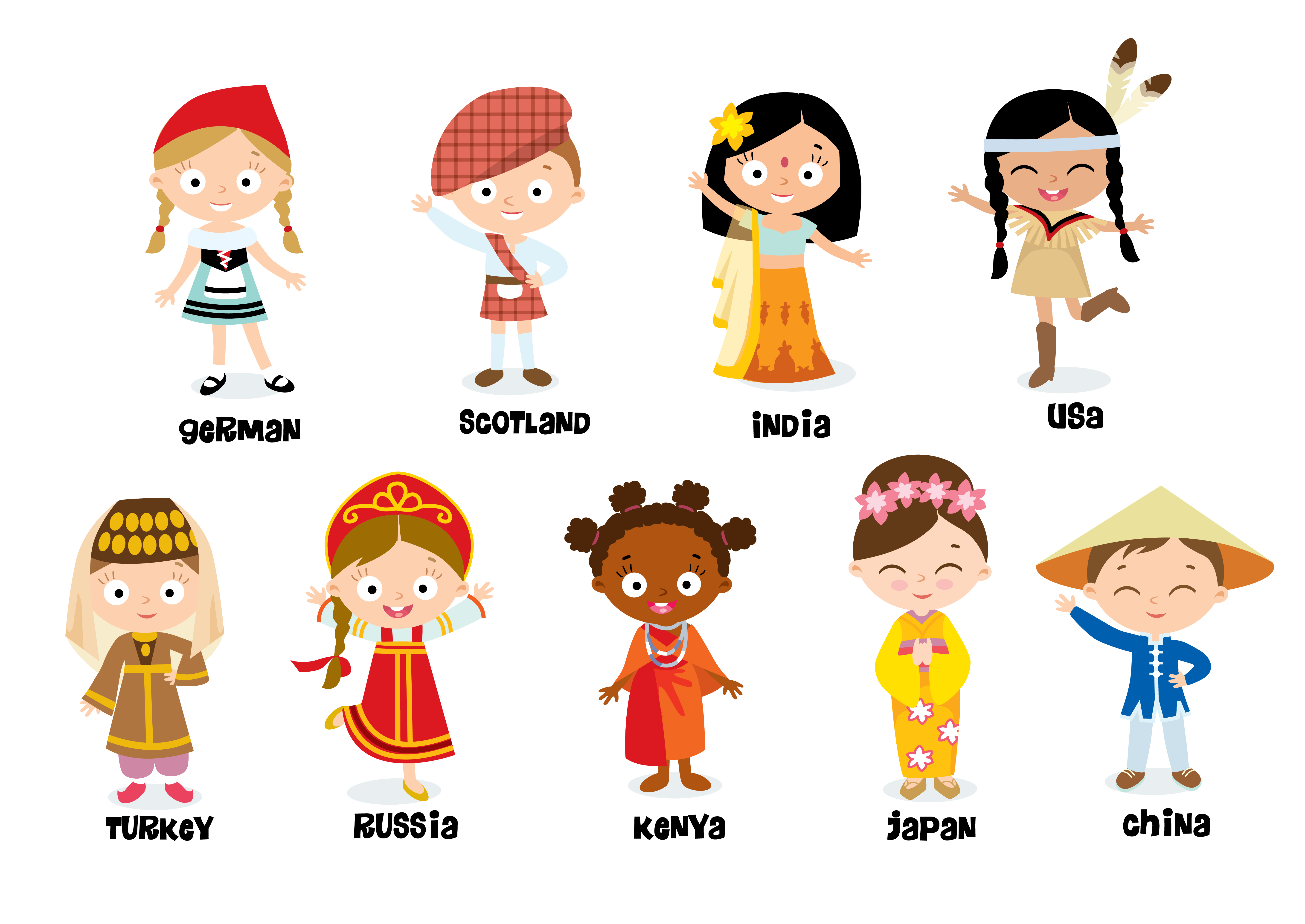Strategic thinking development Worksheets for Ages 7-8
10 filtered results
-
From - To
Unlock your child’s potential with our Strategic Thinking Development Worksheets for Ages 7-8! These engaging resources are designed to enhance critical thinking skills, problem-solving abilities, and creativity in young learners. Ideal for home or classroom use, each worksheet encourages kids to approach challenges thoughtfully and develop effective strategies. With a variety of fun activities, including puzzles, games, and real-life scenarios, your child will gain confidence in their decision-making skills while having a blast. Perfect for fostering a love of learning, our worksheets are a valuable tool for parents and educators alike! Explore our collection today and inspire insightful thinkers!
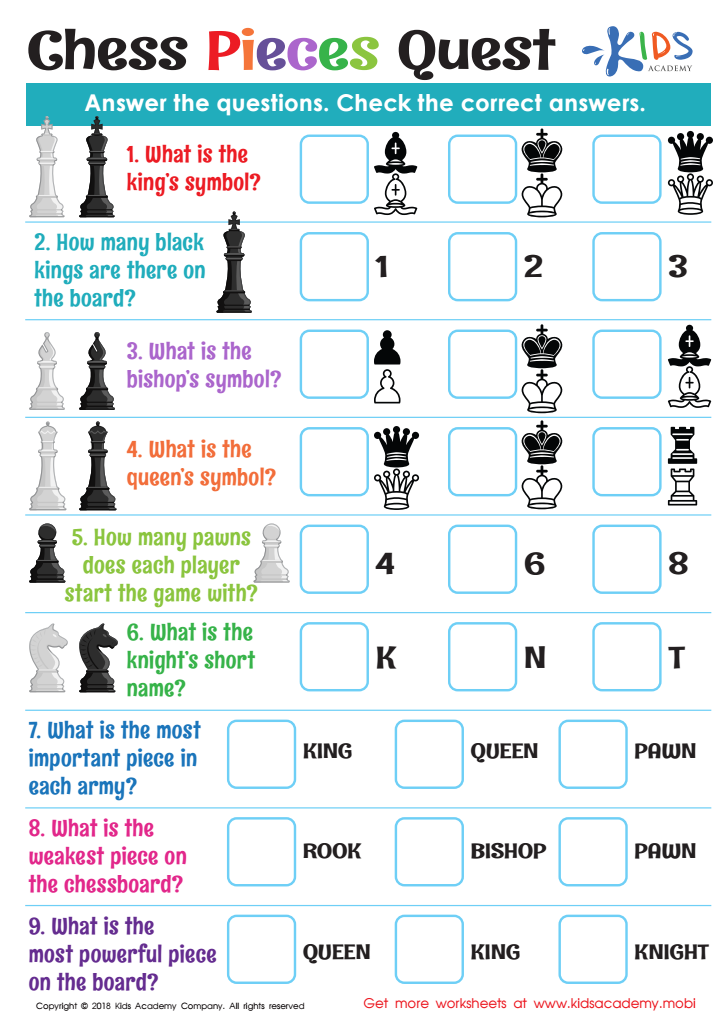

Chess Pieces Quest Worksheet


Notation of Moves Writing it Down Worksheet
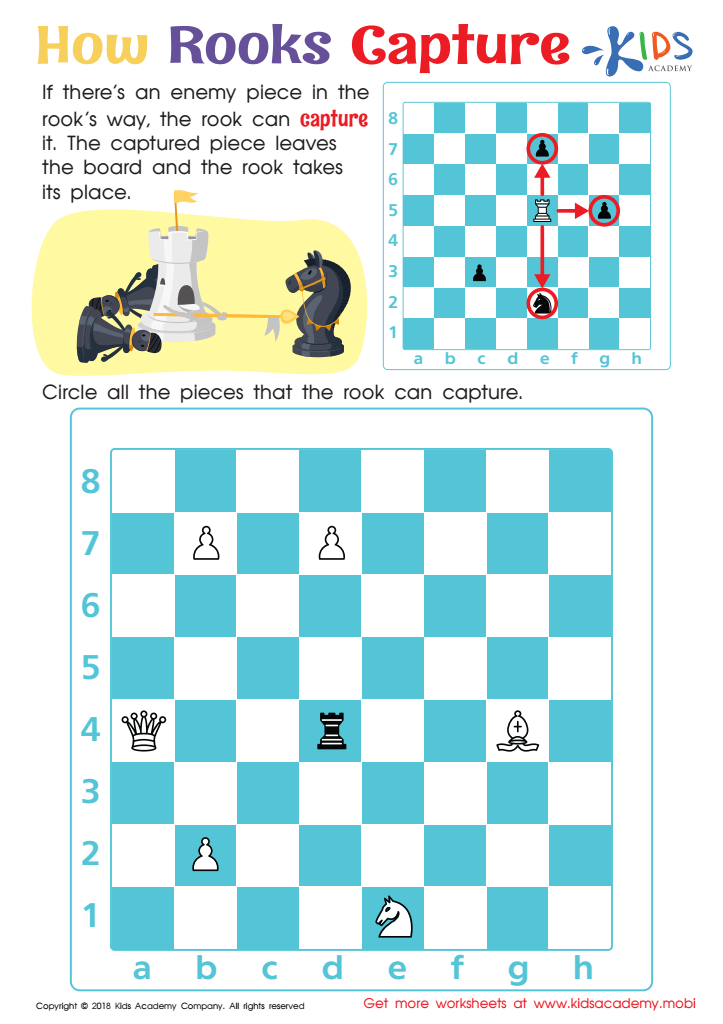

How Rooks Capture Worksheet
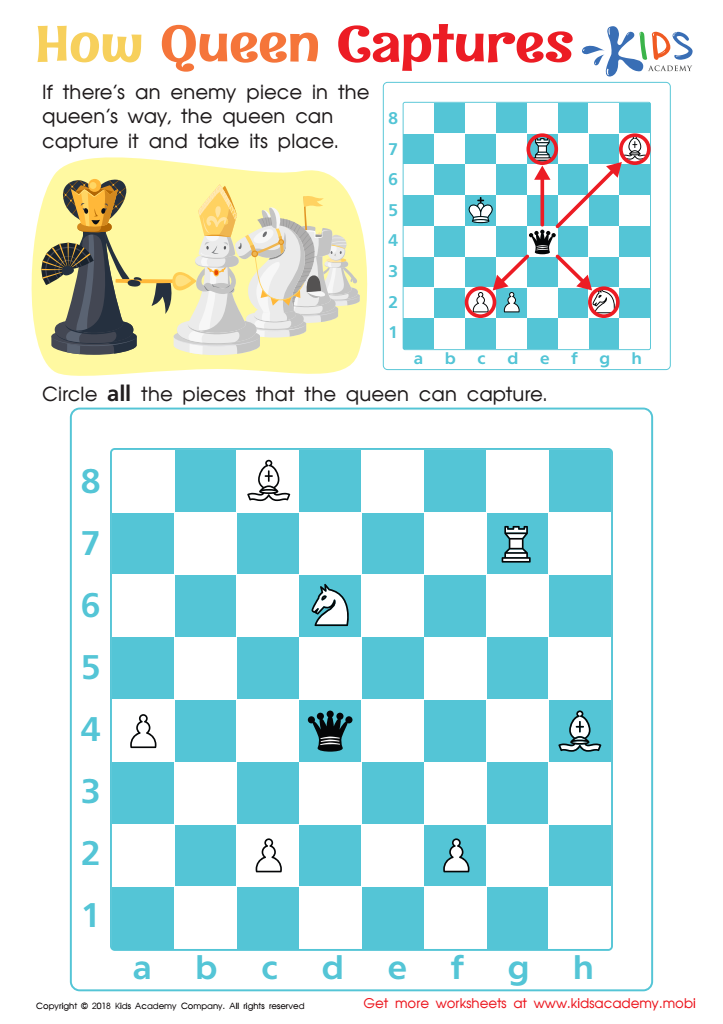

How Queen Captures Worksheet
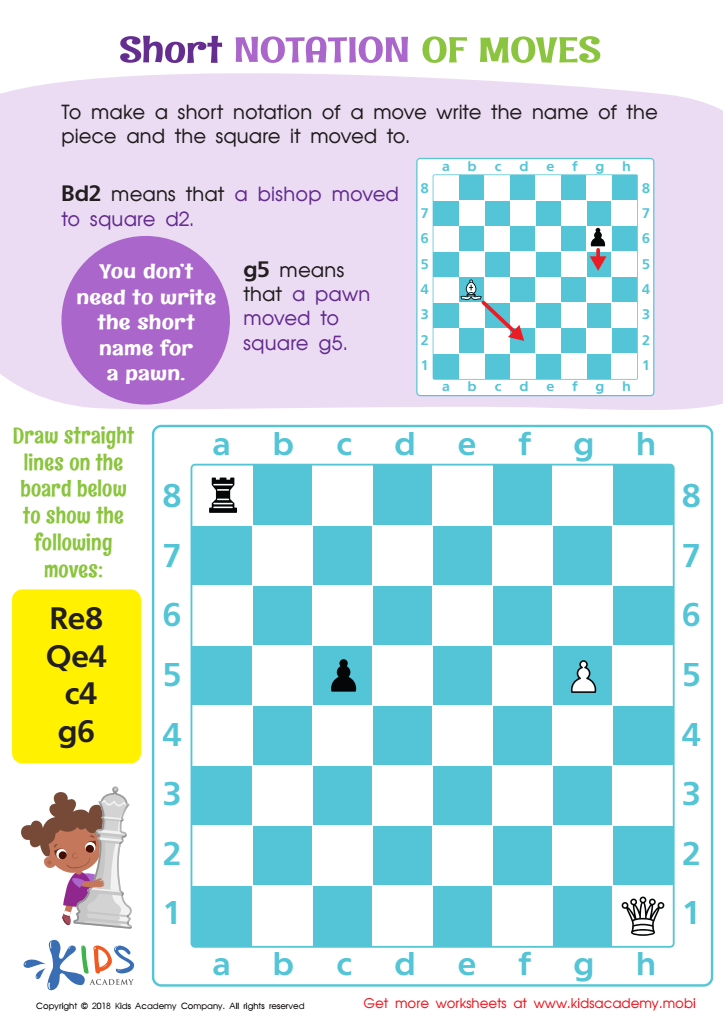

Short Notation of Moves Worksheet
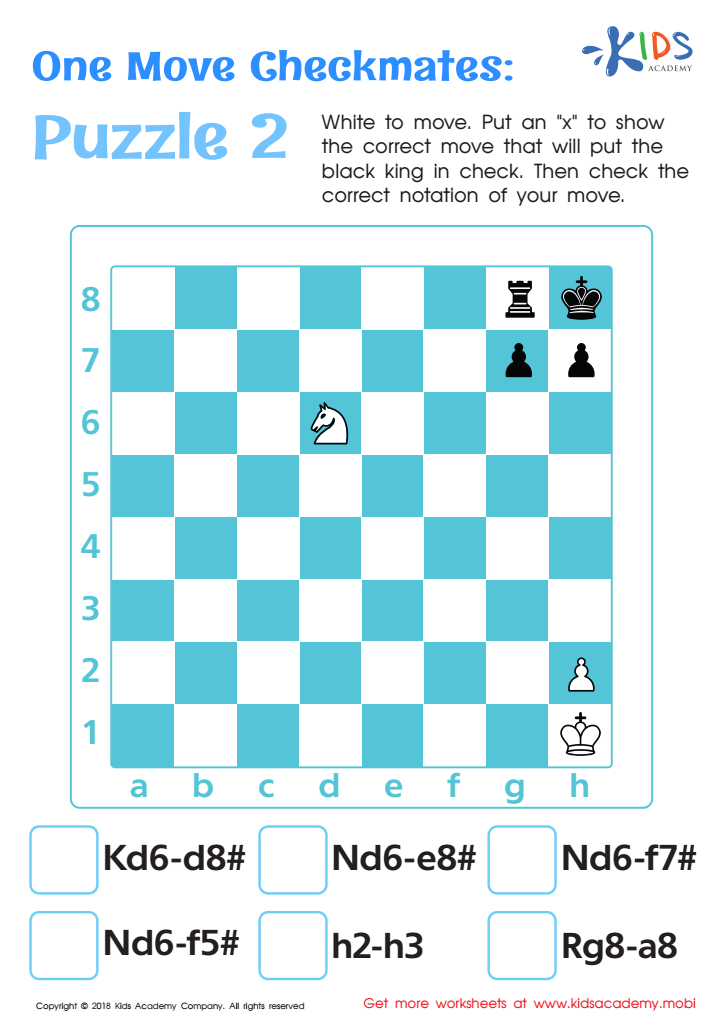

One Move Checkmates: Puzzle 2 Worksheet
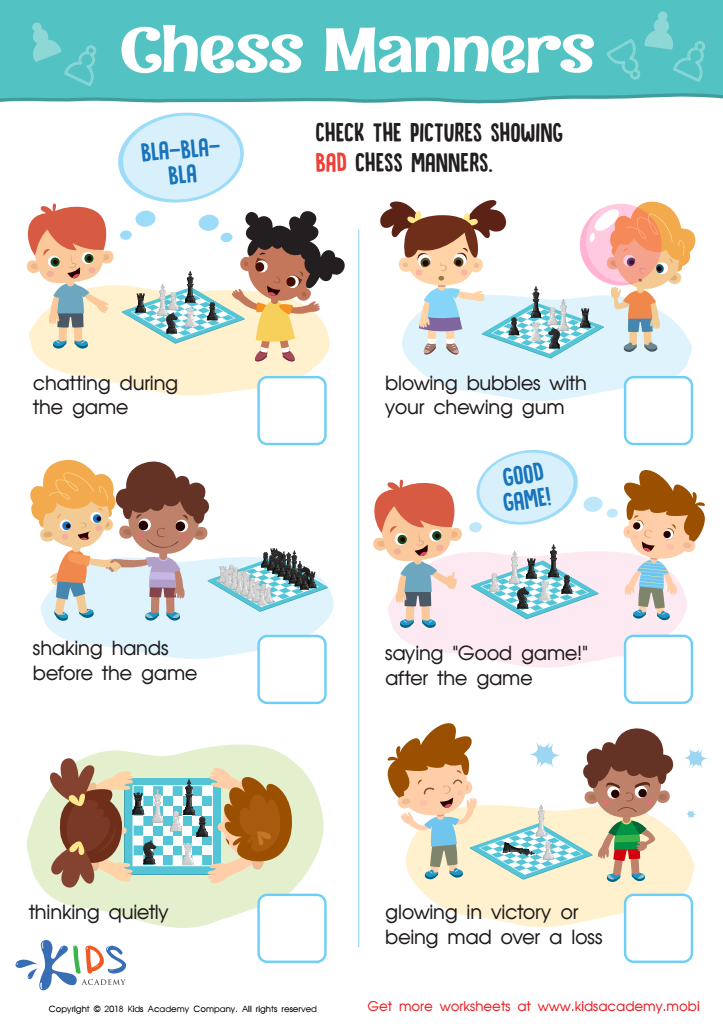

Chess Manners Worksheet
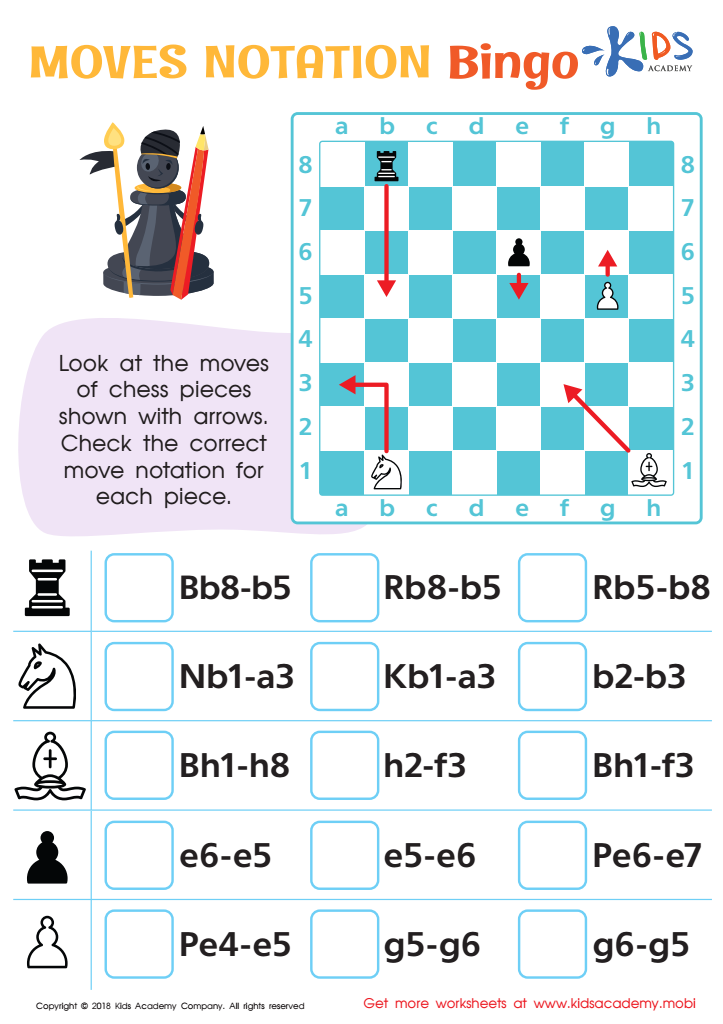

Moves Notation Bingo Worksheet
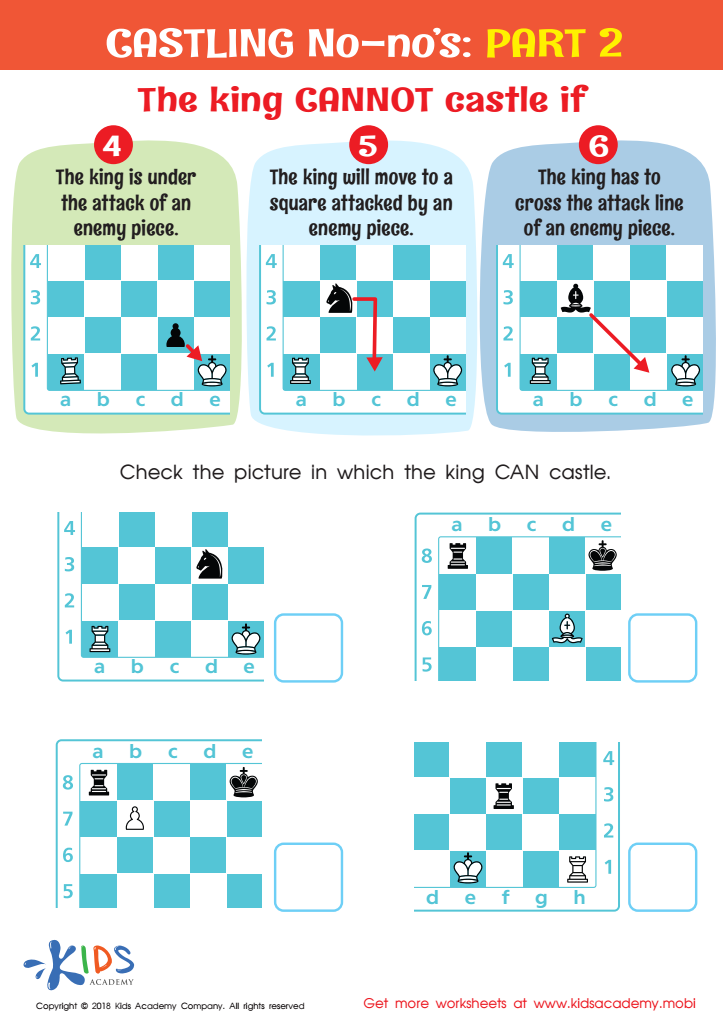

Castling No - no's: Part 2 Worksheet
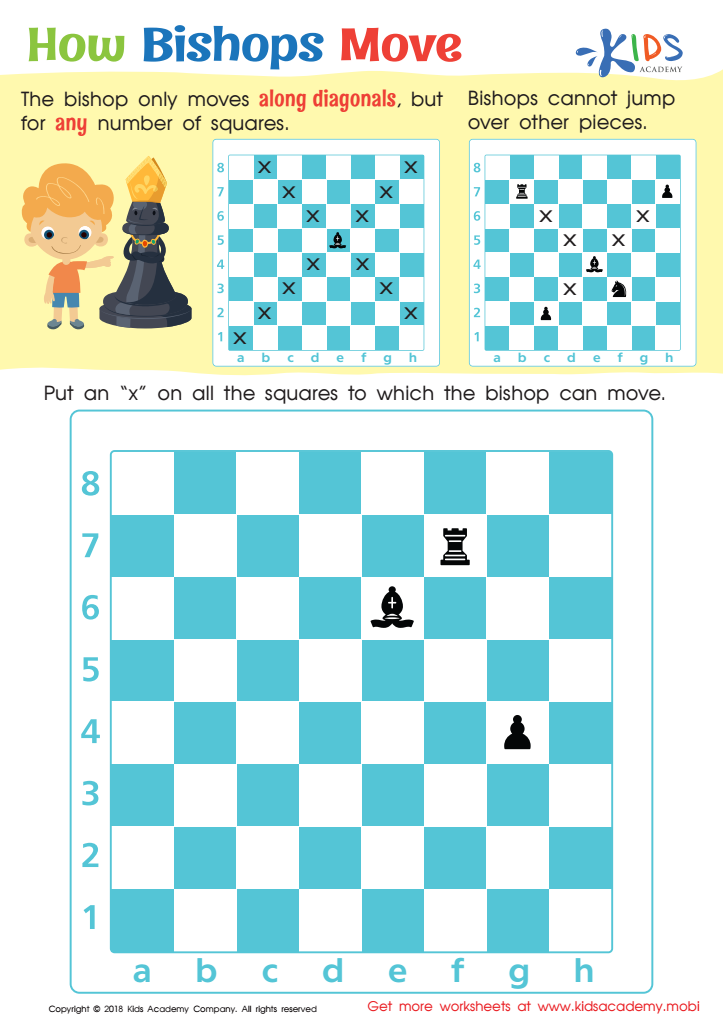

How Bishops Move Worksheet
Strategic thinking development is crucial for children aged 7-8, as it lays the foundation for critical life skills that will benefit them in both academic and social settings. During this stage, children begin to solidify their cognitive abilities, learning how to approach problems methodically and make informed decisions. By fostering strategic thinking, parents and teachers equip children with the tools to analyze situations, set achievable goals, and navigate challenges with confidence.
At this age, children are also forming their identities and peer relationships. Strategic thinking enhances their ability to understand different perspectives and collaborate effectively. These skills lead to better communication and conflict resolution, critical in a classroom and social environment. Moreover, engaging in games and activities that promote strategic thought can make learning fun, fostering a lifelong love for inquiry and education.
Incorporating strategic thinking into everyday interactions not only sharpens academic skills such as math and problem-solving but also prepares children for future challenges, enhancing their resilience and adaptability. Therefore, parents and teachers play a vital role in nurturing this development, ultimately empowering children to become independent thinkers and effective leaders.
 Assign to My Students
Assign to My Students




